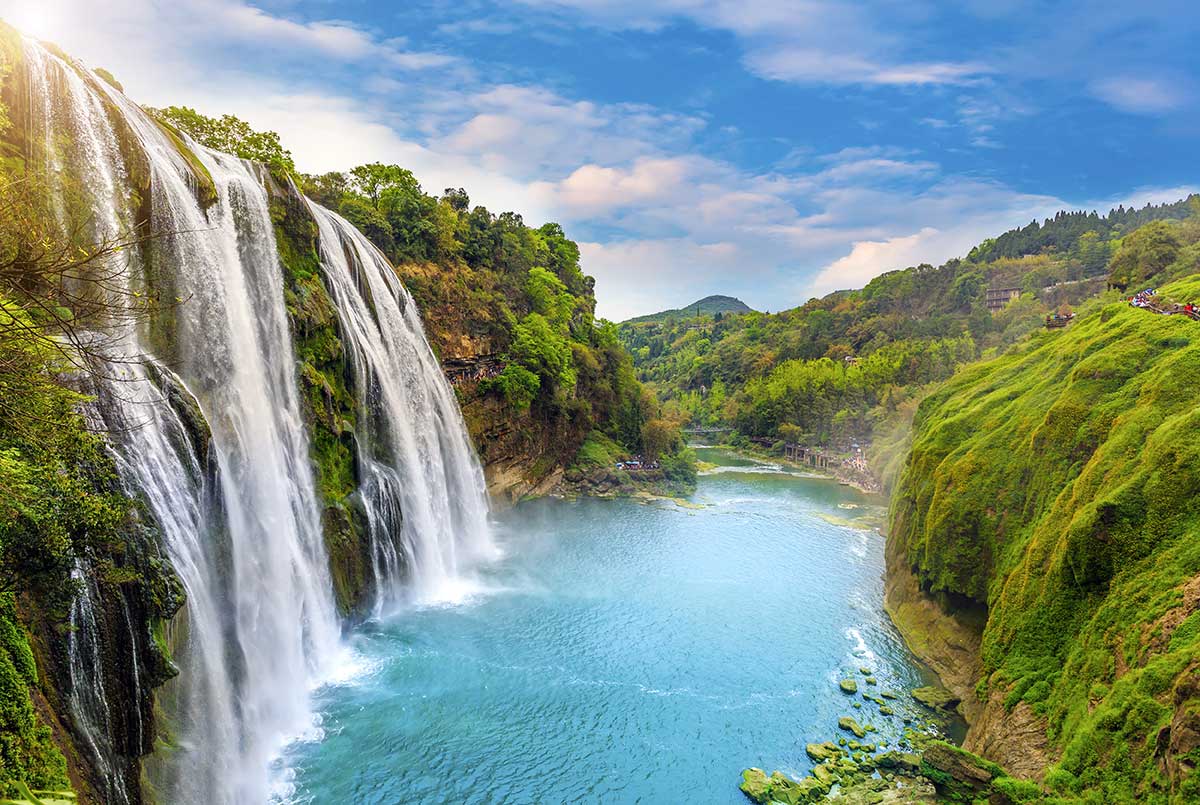General Information About Rome
- Explore Guizhou sceneries & landscapes
- Discover China’ biggest waterfall - Huangguoshu
- Hike in the unique Wanfenglin (Forest of Ten Thousand Peaks)
- Visit the UNESCO World Heritage Site - Xiaoqikong
Day 1: Guiyang – Anshun
After breakfast, we make our way to the Huangguoshu Waterfall. The 77.8 meters tall and 81 meters wide waterfall is understandably Guizhou's top-one natural attraction. On the way, we stop at the 24-Bend-Road, a 4 km scenic route that winds its way up a steep hill. We then continue on to Tianxing Park, a scenic spot famous for various types of natural stone formations and tall cacti that extend skyward like a dense forest. We stay in Huangguoshu overnight.
Day 2: Anshun – Xingyi
We are transported to the city of Xingyi in Guizhou’s southwest, along its border with Yunnan, and after lunch head out towards the Malinghe Gorge, which has been famously described as the “most beautiful scar in the world”. The land here features an abundance of natural springs, streams, rivers and waterfalls. At sunset we arrive at the western part of the Ten Thousand Peaks Forest (Wanfenglin), famous for its spectacular karst landscapes and multitude of peaks.
Day 3: Xingyi – Guiyang
In the morning, we head to Guiyang to visit Jiaxiu Tower. Constructed on a huge rock over Nanming River, the Jiaxiu Tower was first built during the late Ming Dynasty in the 17th century and rebuilt many times thereafter. The three-storey wooden Tower has been standing for about 400 years, and it is especially enchanting at night with its lanterns all aglow. We then pay a visit to Qingyan Ancient Town, one of the four great ancient towns of Guizhou that, in contrast to the delicate and refined ancient towns of southeastern China, has a sturdy and masculine feel to its architecture that reflects its history as a military and courier station. We spend the night in Guiyang.
Day 4: Guiyang – Libo
Libo county is located in the remote southeastern corner of the Buyi and Miao Autonomous Prefecture of Qiannan, on the Guizhou-Guangxi border. We begin the day with a visit to Xiaoqikong, a part of the multi-site South China Karst UNESCO World Heritage Site inscribed in 2007. With its caves, forest, lakes, rivers and waterfalls harmoniously melding into exquisite vistas, the area has been described as giant bonsai garden. We stay over in Libo.
Day 5: Libo – Guiyang
We head back to Guiyang, visit Flower Stream Park (Huaxi Park) after lunch. Flower Stream Park (Huaxi Park) forms the center of the Flower Stream Scenic Area. Blending natural hills and rivers, idyllic scenery with ethnic features, it has gained the name of "Back Garden of Guiyang City". It is located in the south suburb of Guiyang City, Guizhou Province. It covers an area of about 825 mu (about 136 acres), of which about 300 mu (about 49 acres) is water area. Unlike man-made parks, the stream and the four hills in this park are all naturally formed. We stay over in Guiyang.
Day 6: Guiyang
We disembark at Guiyang Airport to end the tour.






